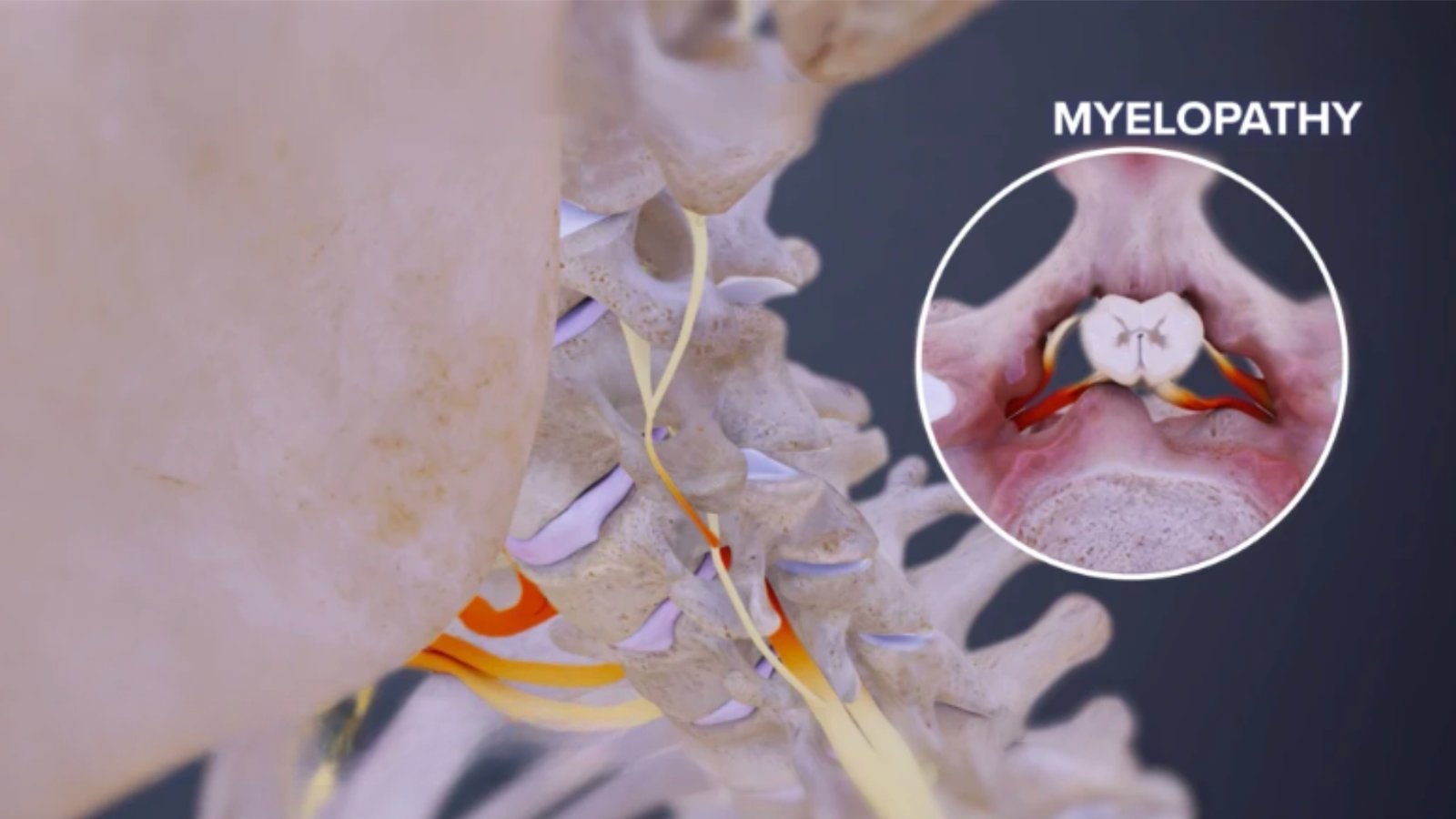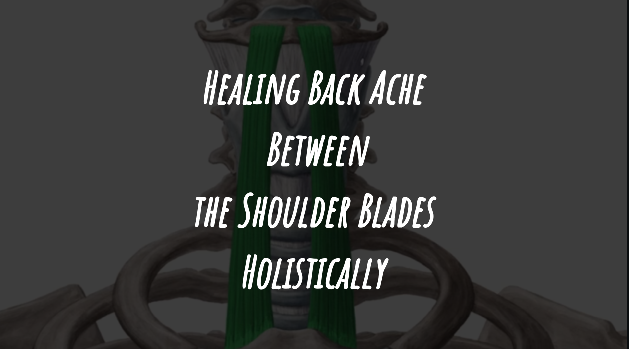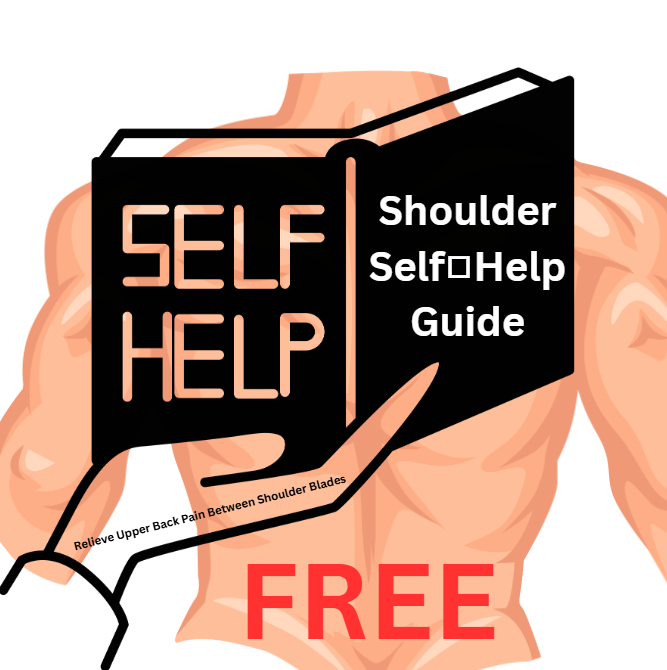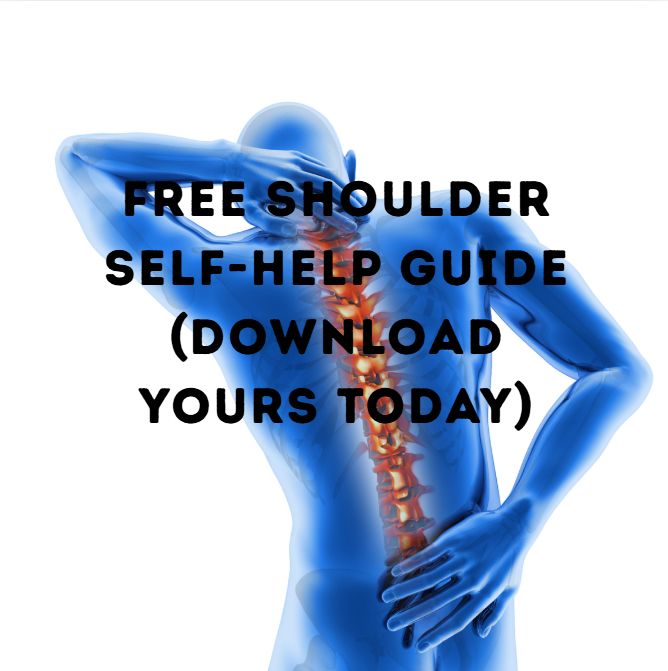
Back Ache Between the Shoulder Blades
Causes, Relief & When to Worry
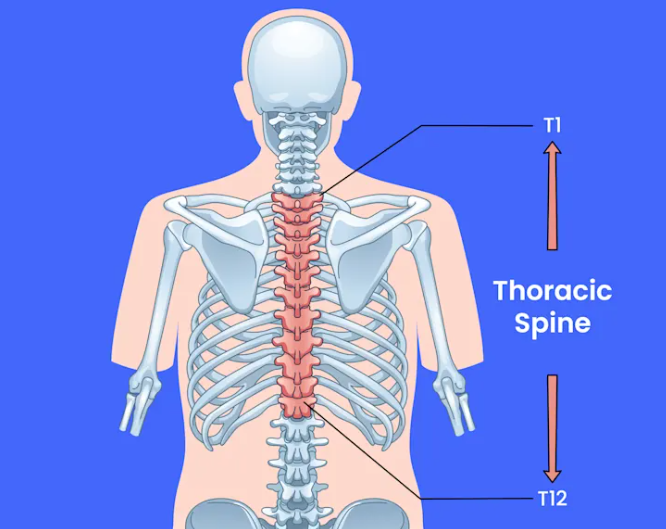
If you’re struggling with back ache between the shoulder blades, you’re not alone. This type of pain is incredibly common — especially for people who sit at desks, lift weights, or spend long hours on their feet. But while the ache is familiar, the cause isn’t always obvious.
Is it just bad posture? A muscle strain? Or something more serious?
That’s why I’ve created a FREE Shoulder Self-Help Guide to help you figure it out. It covers 18+ shoulder problems, what you can do in the first 72 hours, safe home rehab tips, and red-flag warnings.
📥 Get your free copy instantly by filling in the form below:
Error: Contact form not found.
In this post, I’ll also walk you through the most common causes of shoulder blade pain, how to relieve pain at home, and when it’s time to get professional help.
Why Does My Back Hurt Between the Shoulder Blades?
Pain between the shoulder blades can come from many sources. The most common include:
- Poor posture & muscle imbalances → Slouching at a desk, rounded shoulders, or weak thoracic muscles can create a constant dull ache.
- Overuse or strain → Lifting weights, repetitive work, or carrying heavy bags may overload the muscles in your upper back.
- Trapped nerves or disc issues → Less common, but sometimes pain can be linked to the thoracic spine or nerve compression.
- Referred pain → Occasionally, pain in this area comes from elsewhere (e.g., heart, lungs, gallbladder).
👉 Want a clearer overview? Check out my Shoulder Pain Diagnosis Chart for a breakdown of symptoms and possible causes.
Is It Just Posture or Something Serious?
A dull ache that gets worse after sitting is usually linked to posture or muscle imbalance. For many desk workers, this is the main culprit.
But it’s important to know the difference between “normal” muscular pain and red-flag symptoms. If your pain is:
- Sudden, sharp, or severe
- Spreading into your chest or arms
- Associated with shortness of breath or dizziness
👉 Seek medical help straight away.
For long-lasting posture-related pain, the solution is usually a mix of strengthening and stretching. That’s exactly what I cover in my Non-Surgical Treatments for Upper Back Pain program.
How to Relieve Back Ache Between Shoulder Blades at Home
There are several safe, effective strategies you can try:
1. Gentle Stretches
- Seated Thoracic Twist → Sit tall, rotate gently to each side, and hold.
- Wall Angels → Stand against a wall, raise arms overhead, and slide up and down.
- Frozen Shoulder Exercises → If stiffness is an issue, start with pendulum swings and gentle mobility drills.
2. Strengthening Work
- Reverse Row Exercise → A little-known move that isolates the thoracic spine and strengthens the rear deltoids.
- Resistance Band Pull-Aparts → Great for balancing forward-rolled shoulders.
👉 For a full breakdown of why strengthening the thoracic spine is essential, read my guide: Strengthen Your Thoracic Spine & Relieve Upper Back Pain.
3. Lifestyle Fixes
- Adjust your desk setup (screen at eye level, feet flat, chair supportive).
- Break up long periods of sitting with short walks.
- Use heat or ice depending on what feels best.
When Should I See a Doctor or Physio?
Most upper back pain is mild and improves with time, but there are certain red flags to watch for:
- Sudden trauma (like a fall or accident) followed by pain.
- Severe pain with swelling, redness, or fever.
- Pain that spreads into your chest or causes breathlessness.
- Pain lasting longer than 2–3 weeks with no improvement.
👉 My Free Shoulder Self-Help Guide includes a full red-flag checklist so you know exactly when to get help.
Next Steps for Lasting Relief
- If your pain is mild → try the stretches above and grab my free guide.
- If your pain is chronic or keeps coming back → consider my Virtual Non-Surgical Upper Back Pain Rehab.
This program gives you:
✅ 1-to-1 assessment of posture, movement, and muscle imbalances
✅ A customised plan to strengthen your thoracic spine and shoulders
✅ Direct support and accountability to keep you on track
Final Thoughts
A back ache between the shoulder blades is often caused by posture, muscle imbalance, or strain. In most cases, it can be managed with simple home strategies like stretching, strengthening, and improving desk posture.
But if your pain lingers, it’s a sign you may need a more tailored approach.
👉 Start with the Free Shoulder Self-Help Guide, then take the next step with a 1-to-1 Virtual Rehab Program if you’re ready to beat the cycle of recurring pain.
What causes back ache between the shoulder blades?
Most cases come from poor desk posture, muscle imbalance (tight chest + weak upper back), or training overload. Less commonly, it’s related to thoracic disc/nerve irritation or referred pain from elsewhere. A quick way to compare symptoms is my Shoulder Pain Diagnosis Chart.
How can I relieve back pain between the shoulder blades at home?
Start with gentle thoracic mobility and then add light strengthening:
Seated Thoracic Twist (slow rotations within comfort)
Wall Angels (control shoulder blades against the wall)
Reverse Row / band pull-aparts (activate rear delts + mid-back)
Break up sitting every 45–60 minutes and adjust your desk ergonomics. More detail here: Strengthen Your Thoracic Spine & Relieve Upper Back Pain.
When should I worry about pain between the shoulder blades?
Seek medical advice urgently if you have:
Pain after trauma or a sudden severe onset
Hot, swollen joint, fever, or feeling unwell
Chest pain, breathlessness, or pain spreading into the arm/jaw
Numbness/weakness or symptoms lasting > 2–3 weeks despite self-care
(My free guide includes a full red-flag checklist.)
Is my shoulder blade pain just posture or something serious?
Most cases are posture/muscle-related: a dull ache that worsens after sitting and improves with movement. Serious causes are less common and usually come with red flags (see above). If you’re unsure, get checked—and use the diagnosis chart as a starting point.
Which exercises help upper back pain in between shoulder blades?
Great options are Seated Thoracic Twist, Wall Angels, Reverse Row, and band pull-aparts. Aim for pain-free reps, 2–3×/week, building gradually. See exercise guidance here: Strengthen Your Thoracic Spine.
What’s the next step if my pain keeps returning?
Recurring pain usually needs a personalised plan that addresses posture, movement patterns, and strength progressions (with accountability). Explore my 1-to-1 Non-Surgical Treatments for Upper Back Pain or grab the free guide to get started.
What causes back ache between the shoulder blades?
Most cases come from poor desk posture, muscle imbalance (tight chest + weak upper back), or training overload. Less commonly, it’s related to thoracic disc/nerve irritation or referred pain from elsewhere. A quick way to compare symptoms is my Shoulder Pain Diagnosis Chart.
How can I relieve back pain between the shoulder blades at home?
Start with gentle thoracic mobility and then add light strengthening:
Seated Thoracic Twist (slow rotations within comfort)
Wall Angels (control shoulder blades against the wall)
Reverse Row / band pull-aparts (activate rear delts + mid-back)
Break up sitting every 45–60 minutes and adjust your desk ergonomics. More detail here: Strengthen Your Thoracic Spine & Relieve Upper Back Pain.
When should I worry about pain between the shoulder blades?
Seek medical advice urgently if you have:
Pain after trauma or a sudden severe onset
Hot, swollen joint, fever, or feeling unwell
Chest pain, breathlessness, or pain spreading into the arm/jaw
Numbness/weakness or symptoms lasting > 2–3 weeks despite self-care
(My free guide includes a full red-flag checklist.)
Is my shoulder blade pain just posture or something serious?
Most cases are posture/muscle-related: a dull ache that worsens after sitting and improves with movement. Serious causes are less common and usually come with red flags (see above). If you’re unsure, get checked—and use the diagnosis chart as a starting point.
Which exercises help upper back pain in between shoulder blades?
Great options are Seated Thoracic Twist, Wall Angels, Reverse Row, and band pull-aparts. Aim for pain-free reps, 2–3×/week, building gradually. See exercise guidance here: Strengthen Your Thoracic Spine.
What’s the next step if my pain keeps returning?
Recurring pain usually needs a personalised plan that addresses posture, movement patterns, and strength progressions (with accountability). Explore my 1-to-1 Non-Surgical Treatments for Upper Back Pain or grab the free guide to get started.


